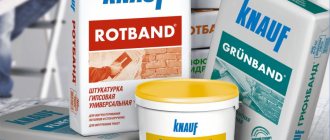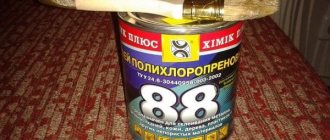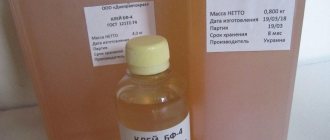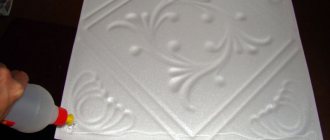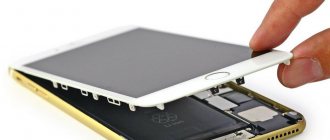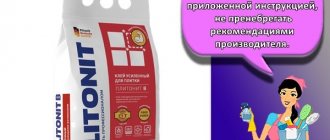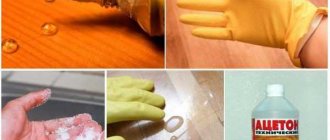A material such as glass has a lot of advantages, thanks to which it is used in a wide variety of areas of life, but despite this it also has a significant drawback. Any careless movement can cause the item to break. But real craftsmen, instead of immediately running to the store for a new product, ask themselves the question of how to glue glass to glass?
Properties of glass adhesive
Any glass is quite fragile and has a smooth, even surface. This can make gluing a challenge. That is why special adhesives were invented and produced that can hold glass elements together.
Each glass adhesive:
- Excellent adhesion of smooth and even surfaces to each other;
- Completely hardens in a fairly short period of time;
- Eco-friendly, does not contain toxic components;
- Resistant to moisture, waterproof, which is also important in the work process;
- Maximum elasticity;
- Quite thick;
- Ideally withstands any temperature changes.
Important: buy glue for joining glass parts only from familiar manufacturers. It may be more expensive, but the purchased material is guaranteed to properly glue the required surfaces.
Polyurethane
If you need a sealant and Moment at the same time, then you should pay attention to durable polyurethane adhesive. Transparent adhesive for glass and metal of the polyurethane group allows you to quickly obtain a strong connection when gluing. It is used in automotive glass repair and in other areas where the adhesive joint is required to withstand various loads. In terms of strength, only cyanoacrylate composition can be compared with polyurethane sealant.
How to glue glass
The process of gluing glass to another material with your own hands occurs in the following way:
- Both surfaces are cleaned of dirt and thoroughly polished. At home, it is recommended to use toothpaste and a brush for this. If you plan to connect with end joints, then you need to carefully polish the joints. The video shows how surfaces are polished.
- After the bases have been polished, washed and dried, clear adhesive is applied to one of them, usually the smaller one. For example, if you need to glue glass decor, then glue is applied to the decorative elements.
- The surfaces are connected, and excess glue is immediately removed using a cloth soaked in white spirit or another solvent suitable for the glue.
- After joining the surfaces, the product is left until the transparent glue is completely polymerized. The time depends on the composition of the adhesive.
In order for glass glued with transparent glue to last a long time on any surface, when choosing a composition, you need to take into account all external conditions that will affect the finished product.
Where is glass glue used?
Glass adhesives are quite limited in terms of use, since manufacturers do not recommend using them for working with other coatings.
As a rule, such adhesives help when necessary:
- Temporarily repair a broken window;
- Bring a porcelain or crystal product back to life;
- Repair the dishes;
- Repair an electrical appliance;
- Glue the mosaic pieces together;
- Glue beads or similar elements;
- Glue the side mirror in the car;
- Repair an aquarium, vase, etc.
The adhesive composition is always transparent, so the repair of a glass object always takes place without a trace.
Important: not every glass glue is suitable for repairing dishes and other products in which food is stored or from where it is consumed. In order to avoid poisoning and harm your own or someone else’s health, it is worth checking whether the composition is suitable for use for such purposes.
Useful tips
The adhesive must be suitable for the type of glass that will be glued, so before purchasing, you should read the manufacturer's recommendations on the product label. If the gluing area is large, it is convenient to apply the composition with a brush, so it is first poured into a suitable container. While working, you must protect your eyes by wearing goggles. If the glue contains a solvent, then the room should be ventilated by opening a window or vent. Difficult stains are removed from the glass with a metal kitchen brush.
Types of glass glue
Glass adhesive compositions are made in different ways and differ in their components. There are several types of this material:
Polymer
This transparent composition is created from polymer substances. Its peculiarity is that it dries exclusively under the influence of ultraviolet rays.
Polymer adhesives are usually needed for bonding mirrors, glass, solar panels, jewelry and the like. To use this material, you will have to acquire an ultraviolet lamp.
Pros:
- Resistant to sudden and severe temperature changes;
- Does not lose its properties when exposed to moisture;
- Withstands a variety of mechanical loads well;
- The adhesive seam is completely transparent and completely invisible;
- Fire resistant, does not contain toxic components.
Important: some types of polymer glass adhesives must be applied in two layers (everything is always described in detail in the instructions). Before gluing parts, you must carefully study the manufacturer's recommendations on the packaging.
Cyanoacrylate
This variety is not particularly often used in work. Such adhesive compositions are usually required for high-quality connections of elements, since they will subsequently be subject to increased loads.
Pros:
- Dries quickly after applying a seam;
- Incredibly resistant, capable of gluing elements for a record long time;
- Can be used on painted glass.
Cyanoacrylate glue is excellent for those cases where glass parts need to be bonded to each other very quickly but effectively. This variety is used in gluing optical parts, microcircuits, conductors and other similar objects.
You cannot purchase such a composition in every store - there are specialized ones for this.
Silicate
This adhesive composition is very similar to liquid nails used in construction and industry. It is made from sealants or silicone substances.
Pros:
- It has a huge selection of shades, so it’s easy to choose the right adhesive for colored glass (which is why it is often used in design and interior decoration);
- The adhesive seam is highly durable and very reliable;
- The cost of the material is low, so almost everyone can afford it.
Silicate glass adhesives are waterproof, waterproof and capable of bonding elements even in very wet rooms or areas. In addition, it is worth noting that these adhesive compositions can withstand elevated temperatures, and besides, they themselves are heat insulators.
Various biological pests such as insects, mold or fungus will not appear and multiply in the future on the resulting adhesive joints. Due to this, silicate glue is often used for work related to country house construction.
Important: when working with silicate compounds, you should be as careful as possible, since they have a fairly strong alkaline reaction. The glue should not come into contact with exposed skin and mucous membranes. It is recommended to carry out work wearing gloves and a respirator.
Domestic
For a simple repair of a glass object at home, you can use any household glue. In this case, PVA for glass will be the best. This material costs little and is good for minor repairs to an object that is usually not subject to stress.
Household compositions are safe and cannot harm a person even if they come into contact with the skin. Just wash the stained area with water or wipe with a towel.
Heat Resistant Glass Adhesive
As the name suggests, this glue is used for joining and repairing objects that are usually exposed to high temperatures.
For example, this composition is suitable for working with the following elements:
- Glass tiles;
- Electric kettle body made of glass;
- Oven front, etc.
Among the components of heat-resistant adhesive compositions there are special additional components that help the frozen material not to deteriorate under the influence of heat and not lose its properties.
You need to choose glue depending on what kind of work you want to do. Now you have learned about the existing types of glass adhesives and where they are used. Guided by this information, you can easily determine what composition you need and purchase it in the store.
Compound
The concept of “silicate glue” includes the name of substances with approximately the same qualities, but different compositions. Let's look at what silicate glue is in general.
The glue looks like a transparent, greenish or brownish gel, the obligatory substance in which is silicic acid salts.
Additionally, the composition includes oxides of alkali metals - either sodium, or potassium, or lithium. Therefore, there are three main types of glue: sodium, potassium and lithium. Each of them creates an adhesive mass that has similar, but inherent properties to each individually.
At home, at school and in the office, the name for this mass is stationery or office glue. In industry - silicate glue liquid glass.
The adhesive properties of liquid glass are directly proportional to the silicate module - the ratio of the amount of silicon raw materials to the amount of the alkaline component. The range of values of the silicate module is 2.0 – 4.0.
The chemical formula of liquid glass is Na2O+SiO2.
